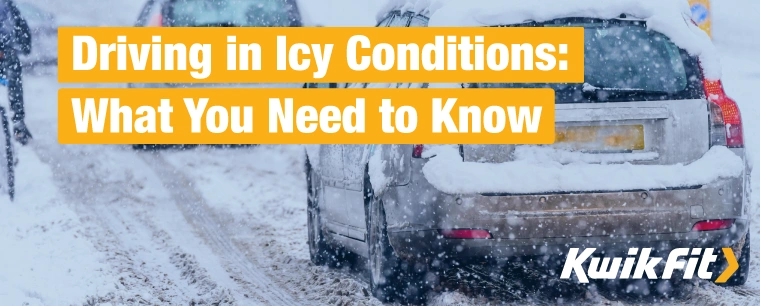Driving in Icy Conditions: What You Need to Know
Jack Dreyer | Tuesday 13th December 2022 1:30pm

Quite understandably, most of us never had our driving instructor with us the first time we had to drive in snowy or icy conditions – and it can be scary. Not only is visibility greatly reduced a lot of the time, but the almost complete lack of grip on the road in particularly icy areas can be an outright hazard.
Another blog of ours about driving in snow covers a lot of great tips on driving with reduced visibility – but driving when there’s very little traction due to ice is a whole different task.
The best way to stay safe is to prepare – especially considering the cold snaps that seem to catch us off guard every year in the UK. The best preparation is to simply not drive in icy conditions; but if you must, then here are some tips on driving safely.
1. Stay slow
Almost all ice-related accidents happen when drivers go faster than they should or when people panic. The best thing you can do when driving on ice is to go slow. This should come as a given but every year people assume they can go faster than they can. Bumpers on the sides of icy roads attest to this!
Staying at a really slow speed means that even if you do end up skidding into somebody, no real harm is likely to be done. By going slowly to begin with, you’re giving yourself ample time to react to unexpectedly slippery sections of road.
2. Leave plenty of room ahead

Tailgating’s a pain in the backside at the best of times, but doing so during icy conditions is a recipe for disaster. In usual conditions at some speed, you should leave at least two car lengths ahead of you. In the wet this goes up significantly but in icy conditions stopping distances can be as much as twenty times longer.
So be sure to leave ample room. If everyone’s going at 20mph on an icy road, it only takes one mistake by a driver further along the road to quickly cause a knock-on effect.
This is also wise while going up hills. Giving plenty of room to drivers ahead means that if their car slides back down the hill, you’re not going to be the one to break their fall – and your insurance company will appreciate the thought!
3. Beware of traction control
Traction control can work wonders for driving between varying ground types – for dry-to-wet driving, for example. And it can also help you when driving in icy conditions by helping to stop a particular tyre completely losing traction and causing your car to go into a tailspin.
This is great for almost all situations but, because traction control automatically cuts power to some wheels when it senses a lack of traction, it can dramatically reduce driver control in situations like icy hills. You’ll often find the traction control over-applying the brakes in these situations. Temporarily turning it off to get up a hill might be just what you need.
4. Try pulling off in a higher gear
Pulling off in a higher gear is the old-fashioned form of traction control. Because higher gears put less power directly into the wheels, they’re less likely to overspin on ground that has very little traction such as compacted ice. The simplified reason is that a higher gear is better at rotating faster but isn’t as strong as a lower gear – which is great if your tyres are able to grip the ground, but will mean lots of slipping if not.
If you’re stuck, try starting in second gear instead.
5. Prepare to get out and push
Especially if you have a car filled with people, passengers add a surprising amount of weight to a car – so you might have to ask your passengers to get out and push, or at least meet you at the top of the hill. Likewise, adverse weather conditions are when good samaritans are most needed. A driver in front may be alone in a stuck car – so consider helping to push other cars!

Make sure your tyres are fit for the task
Whenever the weather turns, drivers around the country are caught off guard with tyres not fit for purpose. And the snowier the ground gets, the more tyre tread you need! Make sure to book an appointment at your local Kwik Fit centre for a tyre checkup.
Any facts, figures and prices shown in our blog articles are correct at time of publication.
Featured Articles
Is it Illegal to Drive With One Headlight?
Saturday 19th July 2025
Wondering if it’s illegal to drive with one headlight? Learn about the safety risks and penalties of illegal blown bulbs and why you should fix them promptly.
Air Con in EVs & Hybrids: Experts Answer Your Questions
Monday 30th June 2025
Does air con drain EV batteries? Can you use the air con while charging an electric car? Find out the answers to these questions & more from Kwik Fit’s experts.
Why Is Your Car Making a Noise? Fixes & Tips
Friday 13th June 2025
When your car starts making unexpected noises, it can certainly be quite disconcerting; it may be nothing to worry about, but here’s what you need to know.









